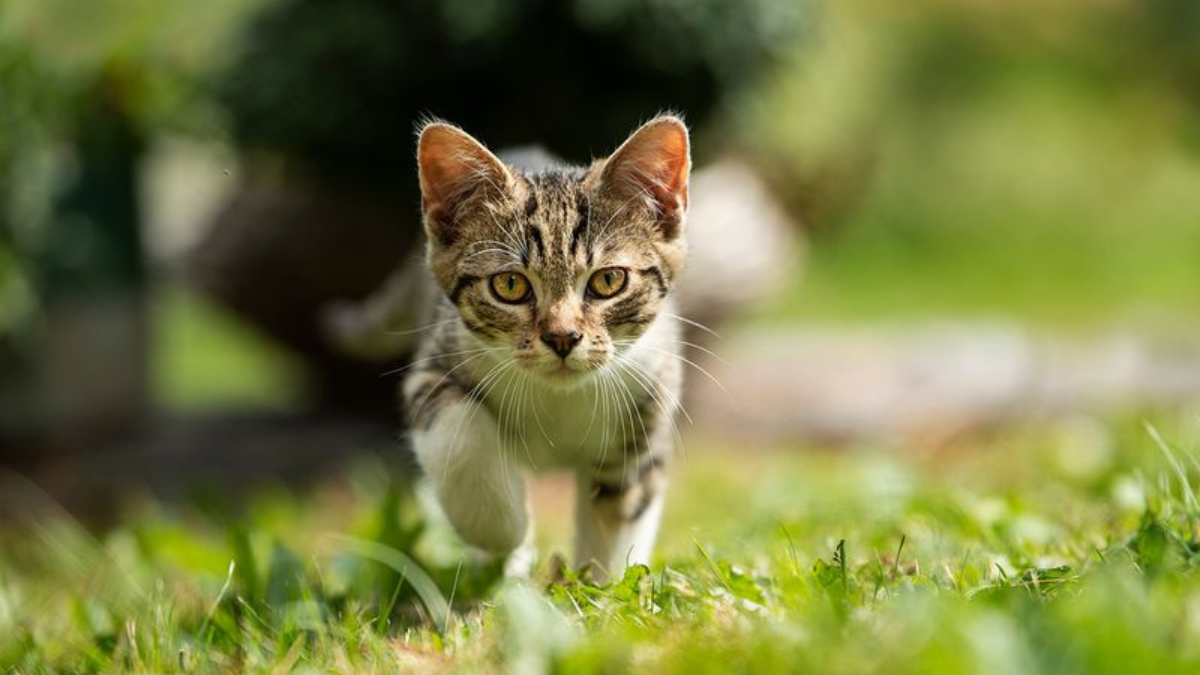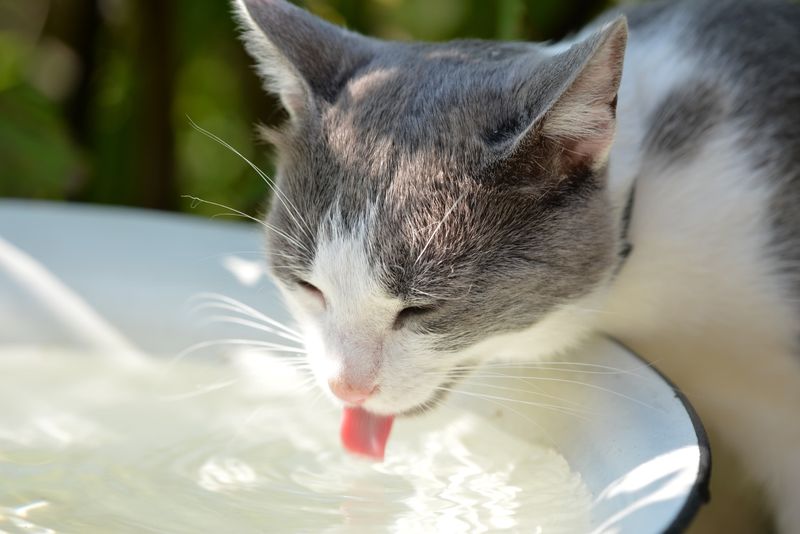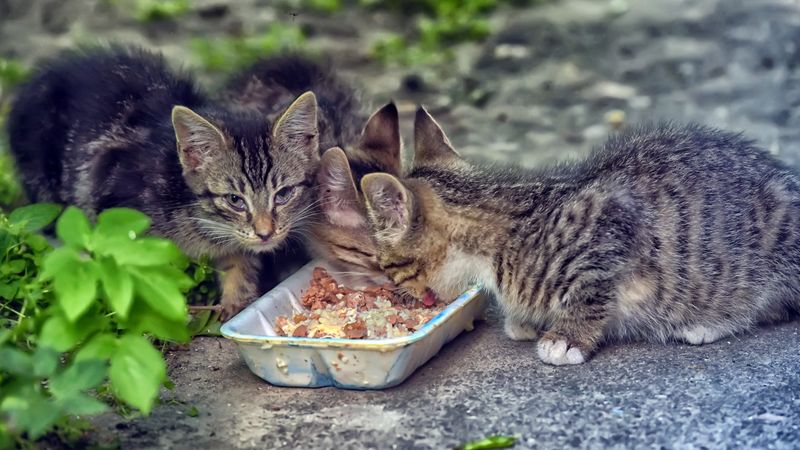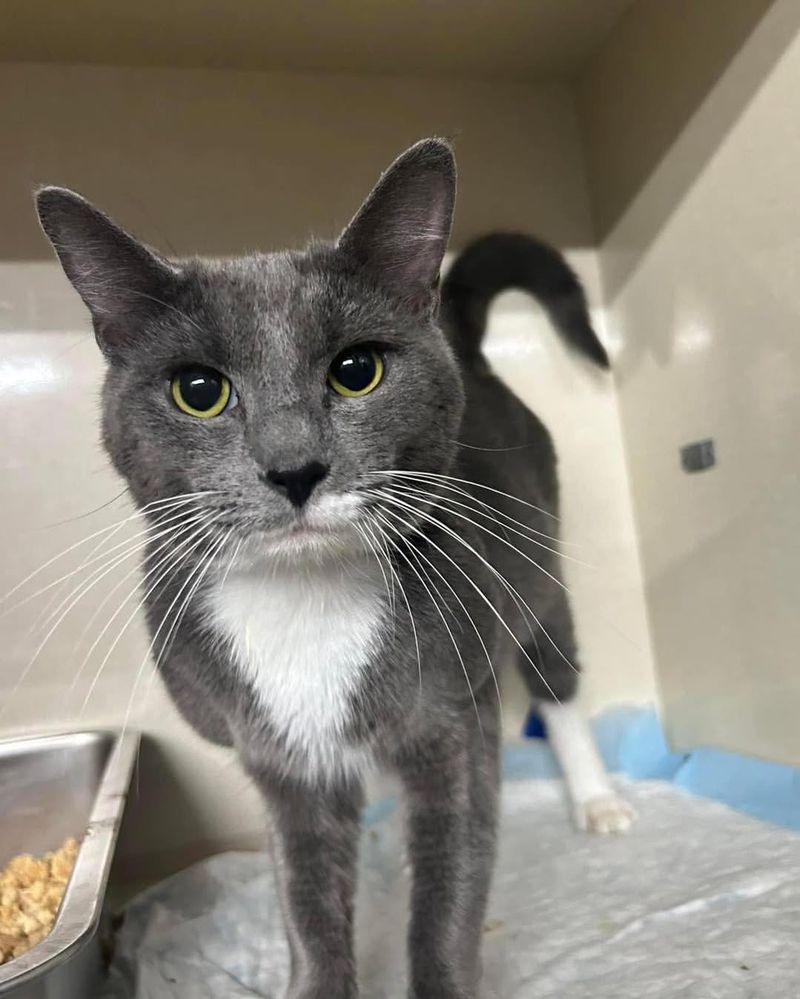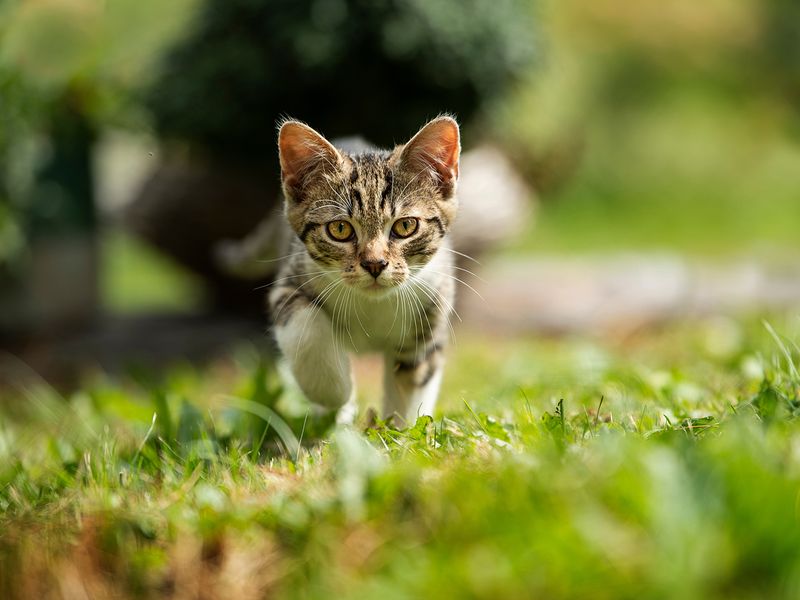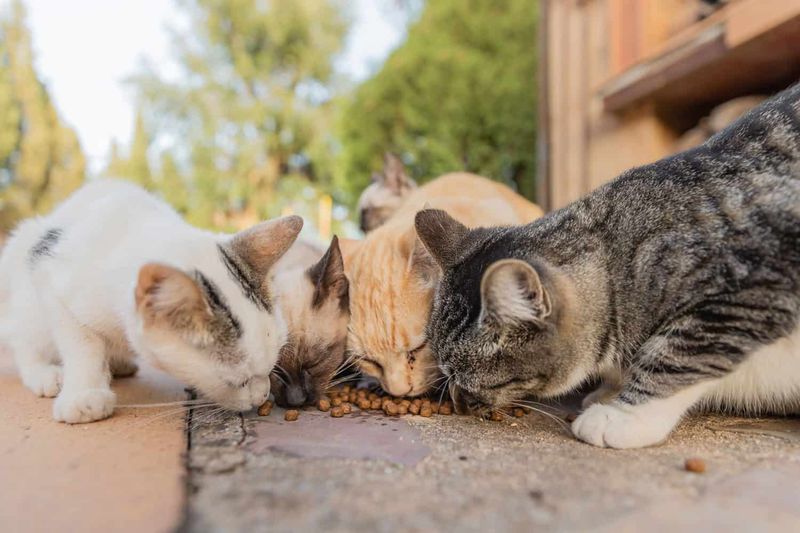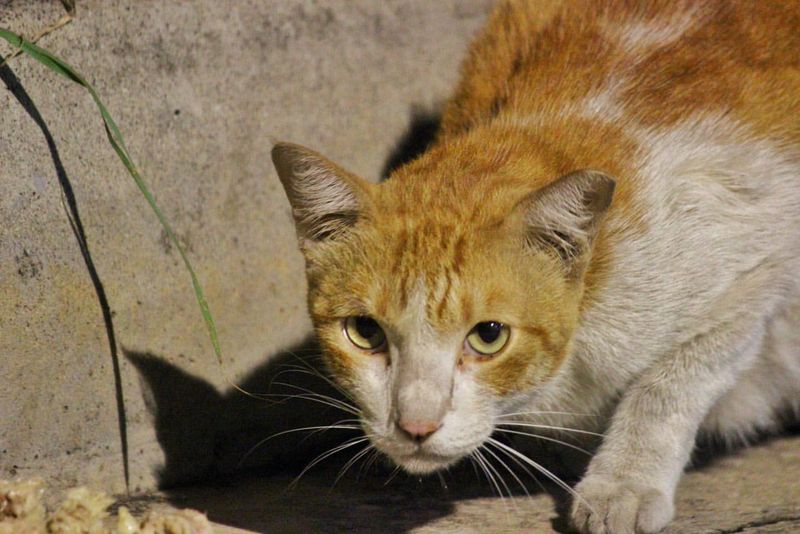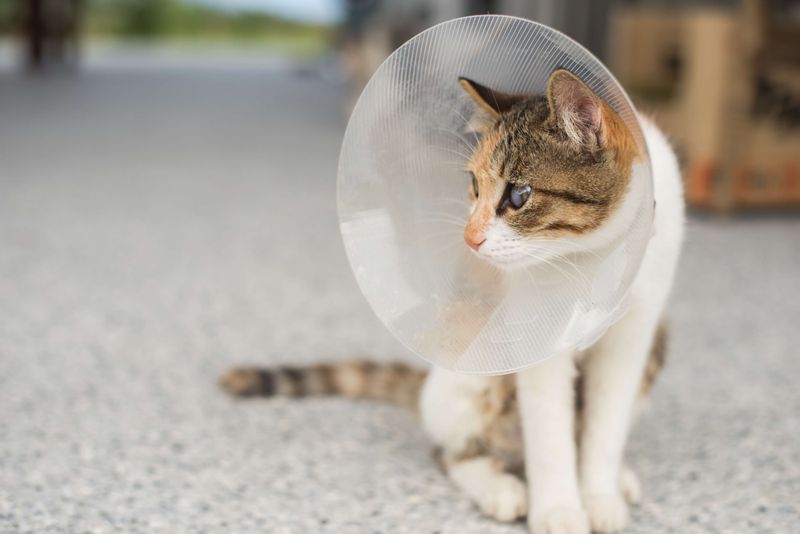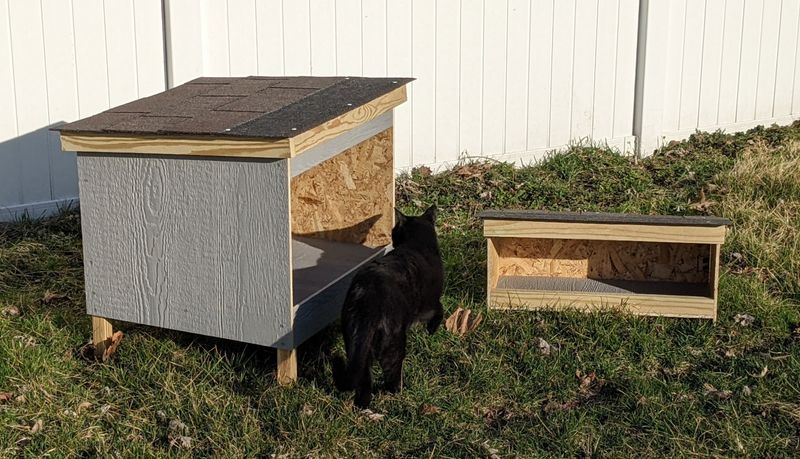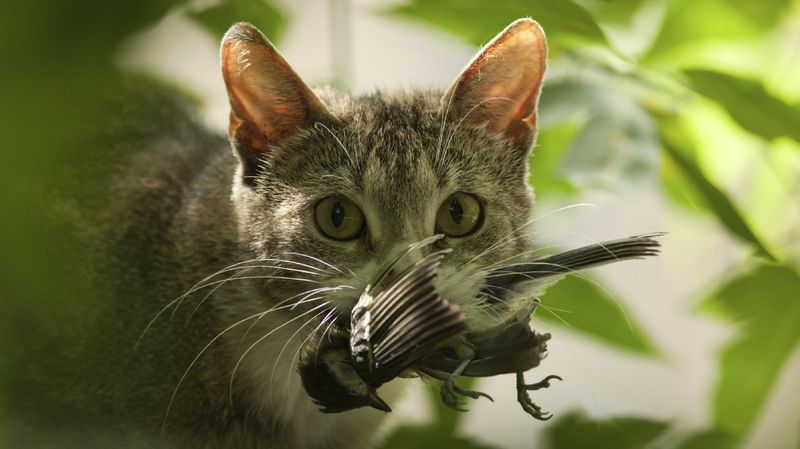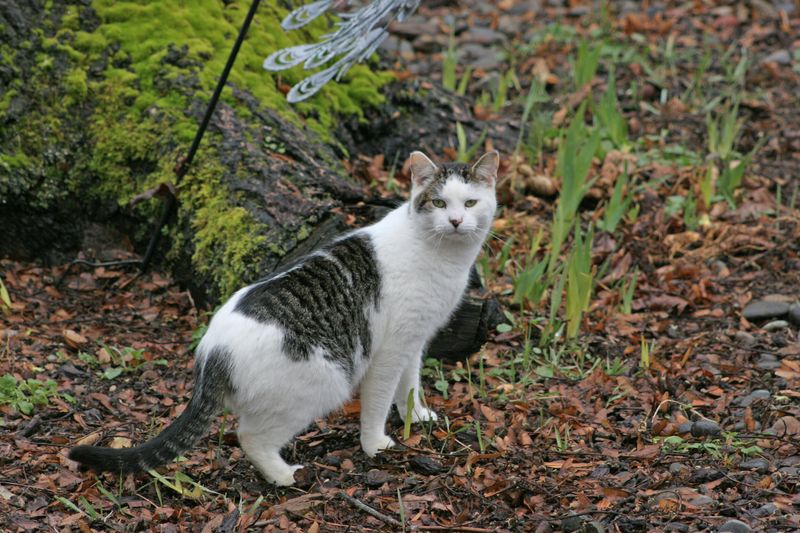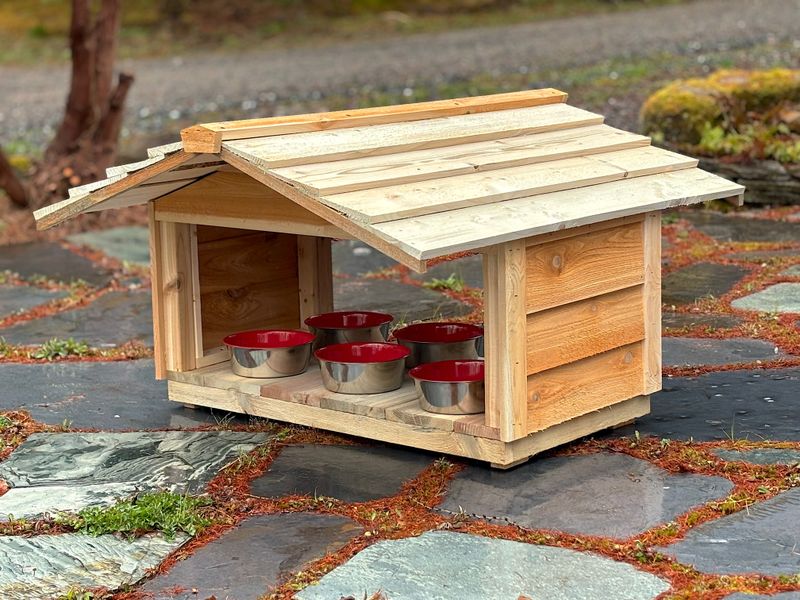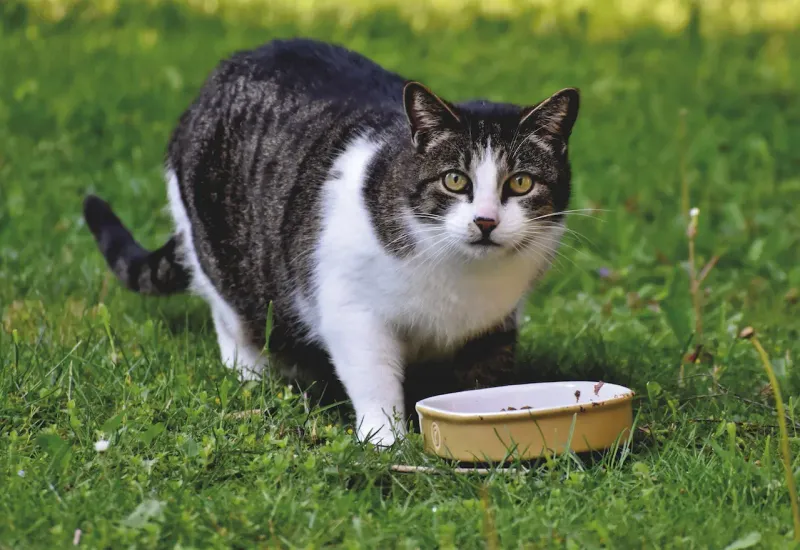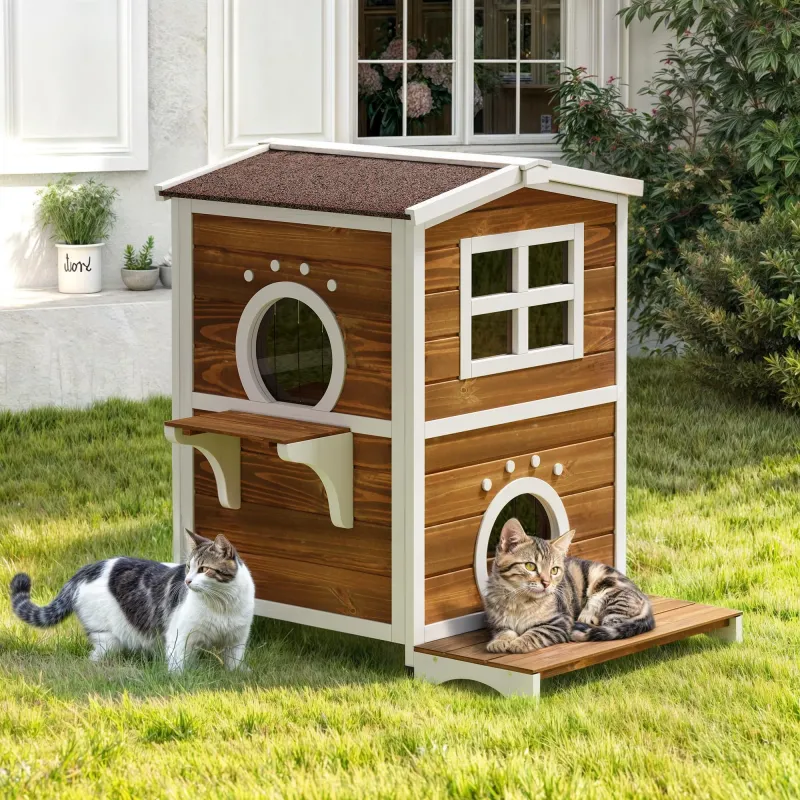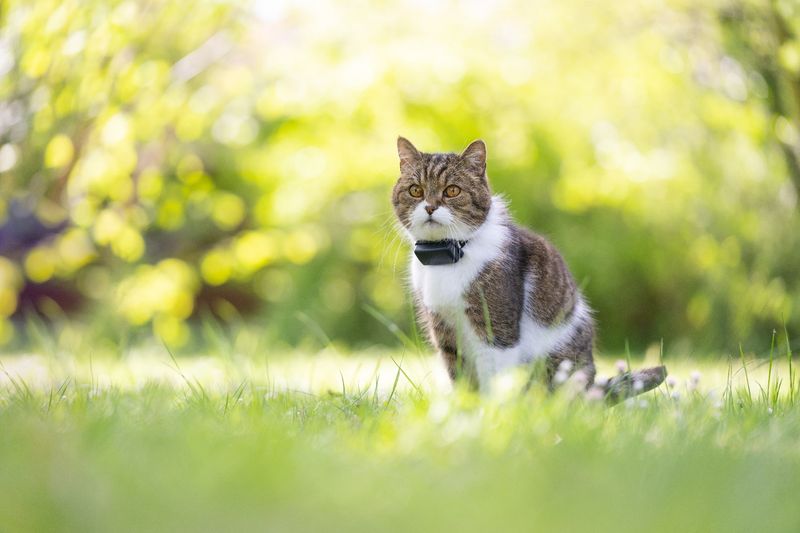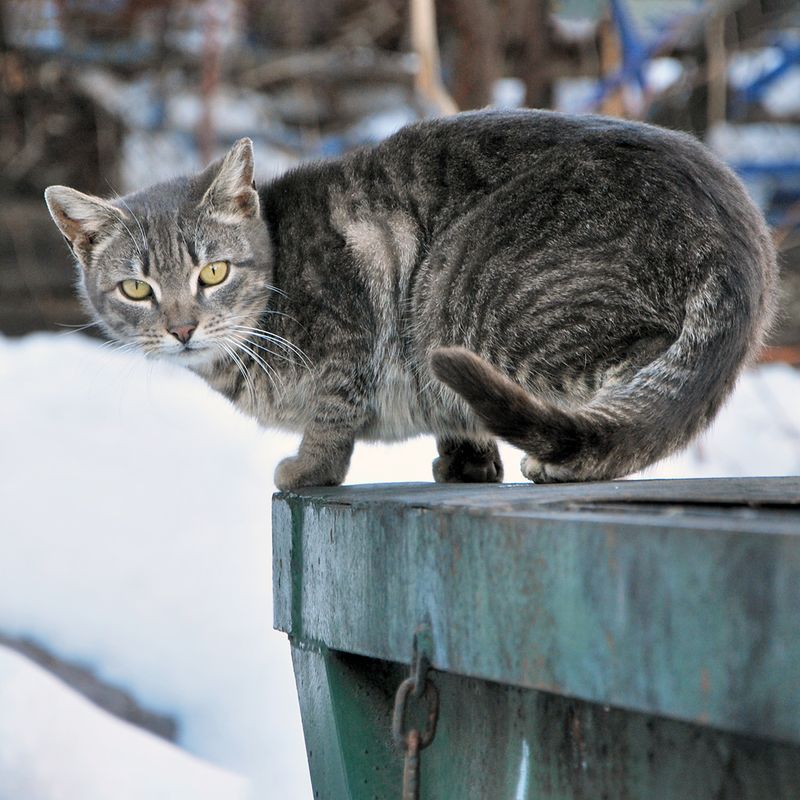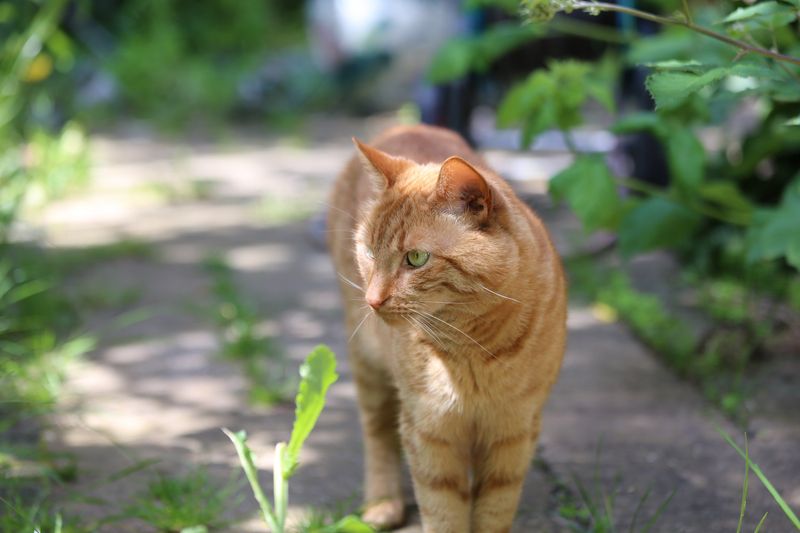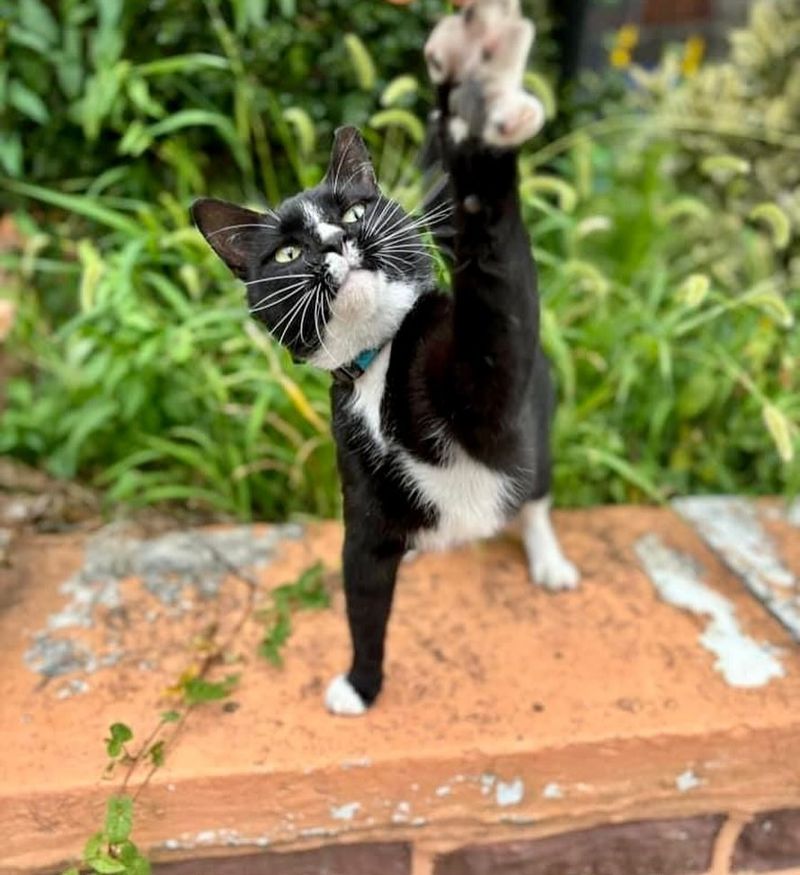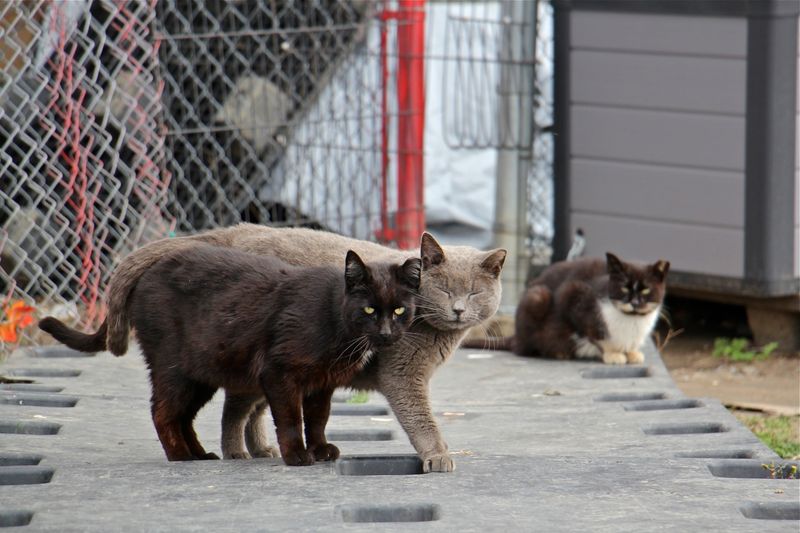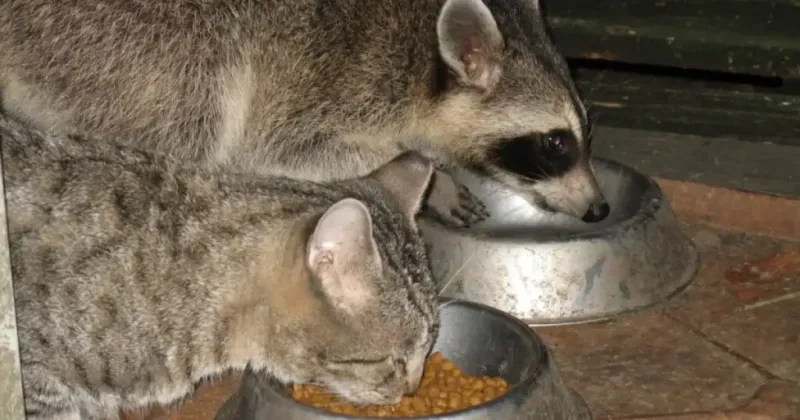📖 Table of Content:
- 1. Provide Fresh Water
- 2. Feed Nutritious Cat Food
- 3. Consider Feeding Times
- 4. Understand Local Laws
- 5. Select a Safe Feeding Location
- 6. Monitor the Cats’ Health
- 7. Spaying and Neutering
- 8. Use Feeding Stations
- 9. Be Mindful of Neighbors
- 10. Respect Wildlife
- 11. Avoid Overfeeding
- 12. Keep Feeding Areas Clean
- 13. Avoid Human Foods
- 14. Plan for All Weather
- 15. Check for Identification
- 16. Understand Cat Behavior
- 17. Build Community Support
- 18. Have a Long-Term Plan
- 19. Expect an Increase in Cat Numbers
- 20. Prepare for Unwanted Wildlife Visitors
Feeding outdoor cats can provide them with much-needed care and support, but it requires careful consideration to ensure both their well-being and the surrounding environment. While these cats often depend on human kindness, improper feeding practices can lead to unforeseen consequences. It’s important to understand their needs and the impact of feeding on the local community.
Caring for outdoor cats involves more than just offering food; their safety, health, and comfort should always come first. There are various factors to keep in mind, such as providing the right type of food and addressing potential challenges that may arise. Being informed helps prevent common mistakes and promotes a positive experience for both the cats and the people involved.
Before feeding outdoor cats, it’s essential to be aware of the broader implications of your actions. Feeding can help the cats thrive, but it’s important to be mindful of the potential risks and responsibilities that come with it. These considerations will help ensure that feeding outdoor cats is a responsible and fulfilling act.
1. Provide Fresh Water
Offering fresh water is just as essential as food for outdoor cats. In many urban environments, these cats may struggle to find clean, accessible water sources. Without a steady supply of fresh water, they could become dehydrated, which can lead to serious health problems.
It’s important to regularly change the water to keep it fresh and free from debris or contaminants. Using a weighted bowl can help prevent tipping, while placing it in a shaded area ensures the water stays cool, especially during warmer months. Providing clean water supports their overall health, helping them stay hydrated and maintain energy levels.
2. Feed Nutritious Cat Food
Opt for high-quality, nutritious cat food specifically designed for felines. Processed human foods can be harmful to outdoor cats, as they lack the necessary nutrients and can cause digestive issues.
Consulting with a vet can help determine the best food options for outdoor cats, ensuring their nutritional needs are met. Depending on factors like availability and climate, consider offering wet or dry food to provide variety and meet their specific needs.
3. Consider Feeding Times
Establishing a consistent feeding schedule is crucial for outdoor cats. Cats are creatures of habit, and having regular feeding times helps them understand when food will be available.
Feeding twice a day, in the morning and evening, is often ideal. This routine ensures they are not left hungry for long and allows you to monitor their health more easily. A regular schedule fosters trust and creates a sense of security, making the cats feel more comfortable in their environment.
4. Understand Local Laws
Before feeding outdoor cats, ensure you are aware of any local laws or regulations. Some areas have specific guidelines about feeding stray or feral cats. Ignoring these rules may result in fines or community backlash.
Conduct thorough research to understand what’s allowed in your locality. Sometimes, it’s required to register as a caregiver or partake in a community cat program. Being informed helps you contribute to a neighborhood-friendly environment while supporting the cats.
5. Select a Safe Feeding Location
Choose a quiet location for feeding that minimizes exposure to traffic and predators. This helps protect the cats from potential harm and ensures they feel secure while eating.
An ideal feeding spot should also be sheltered from harsh weather conditions, keeping the cats comfortable. It’s important to place the feeding area away from public spaces to avoid conflicts with neighbors. A discreet, safe location creates a calm, stress-free environment, allowing the cats to enjoy their meals peacefully.
6. Monitor the Cats’ Health
Keep an eye on the cats’ health by observing their behavior and physical condition regularly. Look for signs of illness such as limping, coughing, or unusual lethargy.
Regular monitoring allows for early detection of health issues, enabling timely intervention or veterinary care. This practice ensures the cats remain healthy and reduces the spread of contagious diseases within the colony.
7. Spaying and Neutering
A critical aspect of managing outdoor cat populations is spaying and neutering. It prevents overpopulation and reduces risks of diseases.
Collaborate with local animal welfare organizations to arrange for spay/neuter services. Many offer programs specifically for outdoor cats. By controlling the population, you contribute to a healthier, more sustainable environment for the cats and community alike.
8. Use Feeding Stations
A designated area for cats to eat protects them from the elements, creating a more controlled environment. This helps ensure the food stays safe from weather conditions and other animals.
Building a simple, weatherproof structure can keep the food dry and secure. Such stations help minimize food waste, maintain cleanliness, and streamline the feeding process. By offering a dedicated space, the feeding becomes more organized and less disruptive to the surrounding area.
9. Be Mindful of Neighbors
Open communication with neighbors is essential when feeding outdoor cats. Some may have concerns or misconceptions about feral cats, which can lead to tension or misunderstandings.
Share your approach and efforts, such as spaying and neutering, to alleviate worries and gain support. Being transparent about your intentions can help dispel myths and foster a positive dialogue. Building good relationships ensures cooperation and reduces potential conflicts, creating a more harmonious environment for both the cats and the community. Regular updates or even involvement in community cat programs can further strengthen these bonds.
10. Respect Wildlife
It’s crucial to balance feeding outdoor cats with an awareness of local wildlife. Outdoor cats can affect local species, particularly birds and small mammals, so care must be taken to reduce these impacts.
Place feeding stations away from natural habitats to reduce predation risks. Consider times when wildlife is less active. By doing so, you maintain ecological balance and foster peaceful coexistence.
11. Avoid Overfeeding
Be cautious not to overfeed, as excess food can attract pests and lead to obesity in cats. Overfeeding can create an imbalance in their diet, affecting their long-term health and energy levels. It’s essential to monitor their condition and adjust portions as needed.
Determine appropriate portion sizes based on the number of cats and their health status. Keep in mind that some cats may require more food due to age or medical conditions, while others may need less to maintain a healthy weight. Overfeeding disrupts natural hunting instincts, reducing the need for cats to hunt and forage, which can negatively impact their physical fitness.
12. Keep Feeding Areas Clean
Regularly clean the feeding area to prevent attracting pests and maintain hygiene. Dispose of leftover food and wash bowls frequently.
Cleanliness reduces health risks for the cats and makes the area more acceptable to the community. Maintaining a clean space shows responsibility and respect for shared environments.
13. Avoid Human Foods
Human foods, even scraps, are not suitable for cats. They can cause health issues or even poisoning, as many common ingredients are toxic to felines.
Stick to cat-specific food products to ensure safety and nutritional adequacy. These foods are formulated to meet a cat’s unique dietary needs, promoting optimal health. Feeding proper food reflects a commitment to the cats’ well-being and reduces health complications. Providing the right nutrition helps prevent issues like digestive problems and long-term organ damage.
14. Plan for All Weather
Consider weather conditions when setting up feeding stations. Provide shelters that shield from rain, snow, or extreme heat.
Weatherproof stations ensure food remains dry and accessible. In colder months, consider slightly warmed food. Proper planning ensures uninterrupted feeding regardless of weather, supporting the cats year-round.
15. Check for Identification
Before assuming a cat is stray, check for identification tags or microchips. Some outdoor cats have owners or caregivers.
Respect the identification by contacting owners if possible. Misidentifying can lead to unnecessary interventions. This practice respects the existing human-cat relationships and avoids unnecessary actions.
16. Understand Cat Behavior
Learning about cat behavior helps in managing outdoor cats effectively. Understand signs of aggression, fear, or contentment, as these can guide how to approach and interact with them.
Recognizing behavioral cues aids in creating a more harmonious environment for feeding and interaction. This knowledge is vital for ensuring the safety of both cats and the people involved. Being able to identify stress or discomfort in cats can prevent conflicts and foster a more positive experience. Additionally, understanding their behavior can help avoid startling them or causing undue stress.
17. Build Community Support
Engaging the community fosters support and collective responsibility for outdoor cats. Organize meetings or join local groups focused on animal welfare. Share information and resources to create a network of caregivers.
Community involvement enhances resources and increases the effectiveness of cat care efforts. By working together, more sustainable solutions can be developed, benefiting both the cats and the community.
18. Have a Long-Term Plan
Feeding outdoor cats should be part of a long-term strategy. Plan for sustainable food sources and ongoing health checks.
Regular evaluations and adjustments to your approach ensure continued support for the cats. A well-thought-out plan benefits both the cats and the community, ensuring efforts are effective and sustainable.
19. Expect an Increase in Cat Numbers
When food becomes regularly available, word spreads quickly in the feline community. Cats communicate through scent markers, and a reliable food source becomes a beacon that attracts more hungry mouths from surrounding areas.
Unfixed cats that gather for feeding will also breed more successfully with better nutrition. A single female cat can have up to three litters per year, with 4-6 kittens each time. Without a spay/neuter plan, what starts as feeding one or two cats can explode into dozens within just a year. Many well-meaning feeders become overwhelmed by the growing colony. Consider partnering with local trap-neuter-return programs if you’re committed to feeding outdoor cats.
20. Prepare for Unwanted Wildlife Visitors
Cat food doesn’t just attract cats. The rich aroma and high protein content make it irresistible to raccoons, opossums, skunks, and even rats. These critters have excellent noses and will quickly discover the free buffet you’ve set out.
Wildlife visitors bring their own set of challenges. Raccoons can become territorial about food sources and may intimidate both you and the cats. Rodents attracted to leftover kibble might establish nests nearby, creating potential health hazards. To minimize these issues, consider using timed feeders, picking up uneaten food after cats finish, or creating feeding stations that allow cats but block larger animals.
